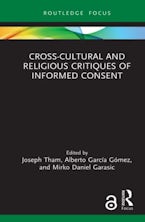
Hostility to Hospitality
Spirituality and Professional Socialization within Medicine
By: Michael J. Balboni and Tracy A. Balboni
360 Pages
- Paperback
- ISBN: 9780199325764
- Published By: Oxford University Press
- Published: October 2018
$35.00
In probing fashion, Michael J. Balboni and Tracy A. Balboni drive the study of religion and healthcare forward in their inquisitive work Hostility to Hospitality: Spirituality and Professional Socialization Within Medicine. They rewrite the stale division typically found in medical literature, in which spirituality is taken as an inner, meaning-making process, and religion as an outer, institutional belief system. With a nod to Paul Tillich, their definition of “chief love” encapsulates religion and spirituality as co-dependent terms in reference to “a central energy and will that drives a person throughout his or her daily routines” (123). As such, their scholarly investigation digs into the tense relationship between religion and the American medical institution, illuminating what was lost in the reconfiguration of medicine from its religious past to its currently assumed secular orientation. The interdisciplinary methods of Balboni and Balboni—theologian and physician, respectively—lead to a robust examination of the engrained cultural assumptions regarding the role and place of religion in healthcare.
The authors begin their argument with a review of the empirical research in the field. They draw from their pioneering work at the Harvard Initiative on Health, Religion, and Spirituality, along with a robust collection of surveys, clinical studies, and randomized control trails. Not only does this portion of the work serve as a useful overview of religion in healthcare—it informed my own efforts to expand chaplaincy services in an Atlanta-based health system—but also tackles a misperception about the place of religion in healthcare. Both patients and providers recognize the value and importance of religion to effective medical care. The authors establish a universal desire to better integrate religion into healthcare, and look to underlying social and cultural processes of healthcare as substantial barriers.
The authors’s approach to theory is not to describe what or how religion exists in healthcare, per se, but to show “what lies behind our culture’s current usage of terms such as ‘religion,’ ‘spirituality,’ and ‘secular’” (201). The aforementioned definition of chief love serves an instrumental purpose, to dwell on the implicit religious structures of healthcare, and in doing so, chisel away at the rigid secular-religious divide. The relocation of death in hospitals, the role of physician as healing authorities, and the overall ethos of patient care—ascribed secular medicine is replete with religious parallels. Yet the animus of medical practice, its chief love, has shifted from transcendent realities to a limited scope of physical cure and comfort. What’s at stake in the religious-secular demarcation is the risk of failing to embrace the lived worlds of patients and providers grappling with the meaning of illness.
As a work of practical theology, the argument extends from an analysis of the issues into bold assertions on how healthcare should incorporate religious traditions into its structural and operational processes. Balboni and Balboni envision strategic partnerships between hospitals and medical communities in which providers receive elective training in order to embrace their respective traditions alongside their role as physicians, allowing religious worldviews to emerge within medical spaces. Patients may elect to receive care from providers whose religious framework aligns with their own. No doubt the authors acknowledge that these proposals are riddled with ethical dilemmas that must be addressed; however, their goal is to reconfigure the conversation around religion and secularism in medical practice. Rather than treating the relationship as either-or, the authors argue for a more pluralistic healthcare in which religious traditions and medicine are integrated in mutually beneficial ways.
Balboni and Balboni permeate their work with surprising—at times pleasantly shocking—arguments regarding the relationship between religion and the medical establishment. No matter what your existing stance on the matter is, Hostility to Hospitality reads as an invigorating thought-experiment that may be judged “successful merely if readers are willing to consider the underlying grounds for their values and motives as they inform the practice and institutions of medicine” (129). Readers of all sorts, from healthcare providers and executives to scholars of the humanities, will benefit from the authors’s acute analysis of where religion and healthcare stand today, and where we may drive them tomorrow.
Avery Glover is the WellStar Fellow in Religion and Public LIfe in the Department of Religious Studies at Georgia State University.
Avery GloverDate Of Review:April 15, 2019
Michael J. Balboni is on faculty at Harvard University and a theologian-in-residence in the Department of Psychiatry, Brigham & Women's Hospital, Boston. His social science research has centered on the intersection of spirituality and medicine. He serves as a congregational minister at Park Street Church and the Longwood Christian Community.
Tracy A. Balboni is Associate Professor at Harvard Medical School and serves as the Clinical Director of the Supportive and Palliative Radiation Oncology Service at Dana-Farber Cancer Institute and Brigham & Women's Hospital. She is an internationally recognized leader and researcher at the intersection of spirituality, palliative care, and oncology.











